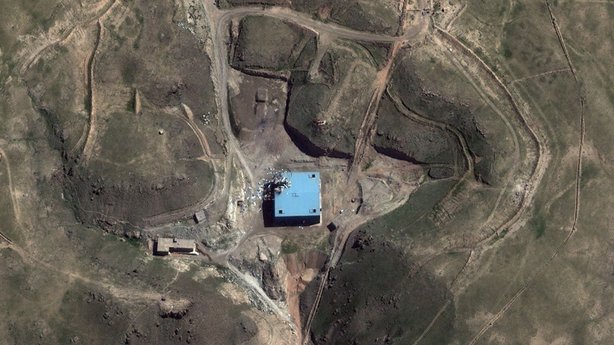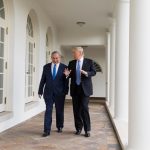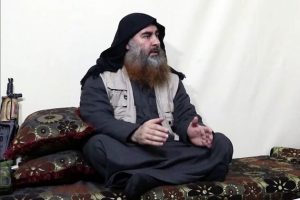by Peter Jenkins
In connection with President Bashar al-Assad’s planned visit to North Korea, David Sanger and Mark Landler wrote on June 4 for The New York Times:
The last time Mr. Assad did business with the Kim family, the result was one of the most brazen cases of proliferation in history: North Korean engineers built a replica of their main nuclear reactor in the Syrian desert. It was the beginnings of a nuclear program that ended in fiery ruins in September 2007, when the building was destroyed in a secret Israeli bombing run.
Sanger and Landler must have imagined that there was a solid basis for what they wrote, since on March 21 Haaretz published a long story about Israeli derring-do under the headline “No Longer a Secret: How Israel Destroyed Syria’s Nuclear Reactor.” Israel’s prime minister subsequently confirmed the essence of the story: Israeli jets destroyed a Syrian reactor when they struck a building at al-Kibar, near Deir al-Zour in early September 2007.
Whether the building destroyed in that Israeli raid housed a nuclear reactor is less certain than these Israeli claims imply.
In May 2011, at the end of a three-year investigation that included access to the al-Kibar site in June 2008 and the collection there of soil samples, the International Atomic Energy Agency (IAEA) was unable to state with certainty that a nuclear reactor had been destroyed. Instead they assessed it “very likely that the building destroyed at the site was a nuclear reactor.”
IAEA governors decided that this justified their finding that “Syria’s undeclared construction of a nuclear reactor” amounted to non-compliance with Syria’s IAEA safeguards obligations. But information which has come to light since suggests ample grounds to doubt whether the finding was accurate.
According to the March 2018 Haaretz report, Israeli identification of al-Kibar as the site of a Syrian reactor took place in March 2007. The basis for it was material taken from the personal computer of the head of Syria’s Atomic Energy Commission. The material led Israeli intelligence analysts to deduce that a reactor was under construction at al-Kibar and nearing completion, and that it was modelled on a North Korean reactor located at Yongbyon.
If the “reactor” were nearing completion and of the Yongbyon type, reactor-grade graphite should have been present in large quantities in the soil samples that IAEA inspectors collected in June 2008, even though by then the site had been cleared of all traces of the destroyed building. Reactor-grade graphite is an essential component of the cores of gas-cooled, graphite-moderated reactors (GCGMR) like the one at Yongbyon. The bombing of the “reactor” would have dispersed particles far and wide.
But the IAEA was unable to certify the presence of reactor–grade graphite in the soil samples. In its May 2011 report, the agency merely implied that graphite particles collected at the site might or might not have been reactor-grade: “the graphite particles were too small to permit an analysis of the purity compared to that normally required for use in a reactor.” This conclusion should cast doubt on the hypothesis that a GCGMR was under construction at al-Kibar, given modern analytical capabilities, in the view of two nuclear engineers that Gareth Porter interviewed for a piece in Consortium News.
A second reason to doubt the North Korean reactor theory is the IAEA’s suggestion that the “reactor” building also housed a spent fuel cooling pond. In the view of Yousry Abushady, an IAEA inspector for 23 years and a GCGMR expert interviewed by Porter, this is highly improbable. At Yongbyon, and everywhere else in the world where GCGMRs have been built, the cooling pond is located in a separate building, away from the reactor building, for safety reasons.
The dimensions of the supposed reactor building are also an issue. It’s not just the length and breadth that are different: 40m by 40m at al-Kibar, and 47m by 47m at Yongbyon, according to Haaretz. It’s also the height. Abushady, who visited the Yongbyon site as an inspector on several occasions and who studied photographs of the al-Kibar “reactor” building released by the CIA in May 2008, estimates that the latter was less than half the height of the Yongbyon reactor building. It was thus nowhere near high enough to house a Yongbyon-type reactor (let alone long enough to house a cooling pond in addition to the reactor).
A further question concerns anthropogenic natural uranium particles. In May 2011, the IAEA reported that it had found such particles. Characterizing them as evidence of “nuclear-related activities at the site,” the agency implied that their presence supported the reactor hypothesis. But for that judgment to be credible such particles should have been present in the IAEA’s soil samples. Instead, the June 2008 soil samples were devoid of anthropogenic natural uranium particles, according to Robert Kelley, a US-trained engineer and ex-IAEA inspector whom Porter interviewed and in whom a member of the June 2008 Syria inspection team confided. The particles came, rather, from a “changing room” at al-Kibar.
A fifth issue is the uncertainty that surrounds how the “reactor” would have been fueled. The North Koreans “froze” their GCGMR fuel fabrication plant at Yongbyon in 1994. In 2011, the IAEA described the plant as having been in poor condition in 1994 and having deteriorated further during the “freeze.” In Playing to the Edge, published in 2016, Michael Hayden, CIA director from 2006 to 2009, discloses that the CIA searched for a Syrian fuel fabrication plant without success.
These are not the only grounds to question Israeli claims about their September 2007 exploit. Others can be found in Porter’s November 2017 Consortium News piece. But these five are reason enough to doubt whether what Israel destroyed in its September 2007 raid was a replica of a North Korean reactor.
One last point merits a mention. Porter quotes from Playing to the Edge to describe how Hayden decided to release supposed evidence of North Korean reactor collaboration with Syria to sabotage a US nuclear deal with North Korea that appeared to be in the offing, since he (and Vice President Dick Cheney) were opposed to it. Does that episode explain, by analogy, why The New York Times chose to reminded its readers of the Korea-Syria reactor story eight days before Donald Trump is due to meet Kim Jong Un in Singapore?






Hello Bob. I thought I might stimulate a response from you. I wonder how you react to this.
‘Denuclearization’ of DPRK looks to be primarily arms control and reduction – monitoring nuclear weapons and ballistic missiles, and not verifying nuclear materials. How that monitoring should be organized will be decided; a main role for IAEA does not look appropriate.
As former responsible for IAEA-SG DPRK for many years and deeply involved in technical analysis and logistic of the CIA claim about the Syria reactor, I fully support the article of the writer (Peter) and the comment of Bob. I have many additional proofs of the falsification of the claim and waiting the moment the IAEA (or others) to open investigation of these events.
Hi Jim Given the trilateral experience I don’t think IAEA will get near the devices. They might verify the HEU and Pu from weapons but I suspect that will be done in the US. At the Nevada National Security Site. The US has provided so much technology and instrumentation to IAEA that Bolton can easily leave IAEA out altogether. However, the Agency may have a role in matters like verifying natural U in the fuel fabrication process, for example. Or natural UF6 feed cylinders and tails.